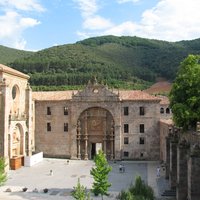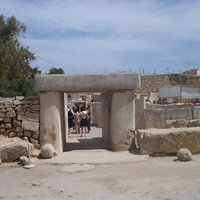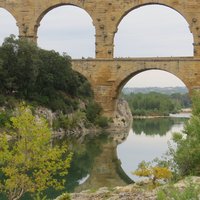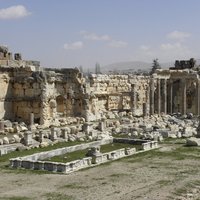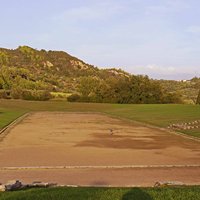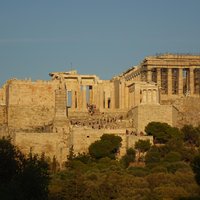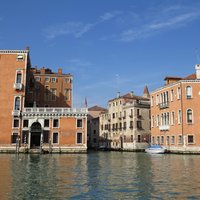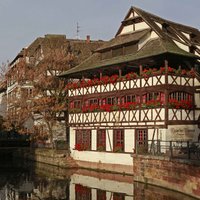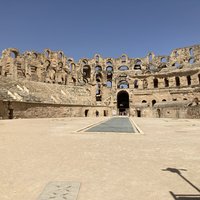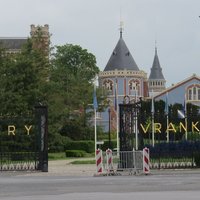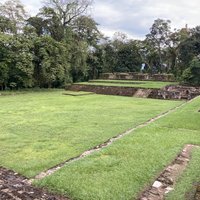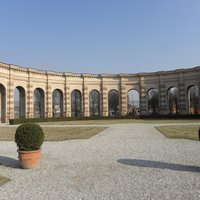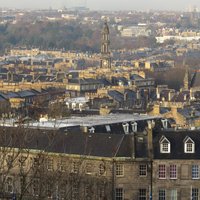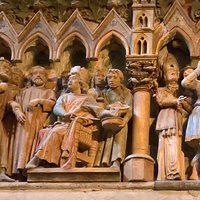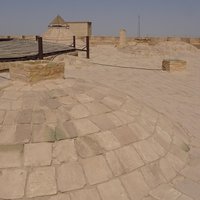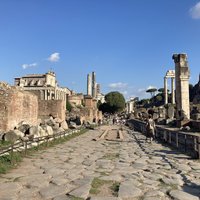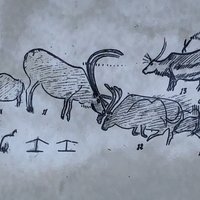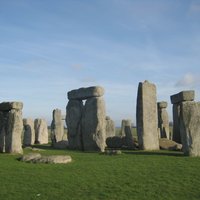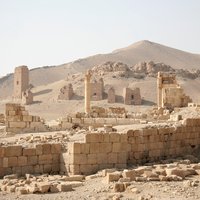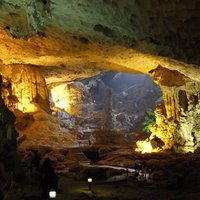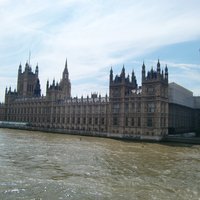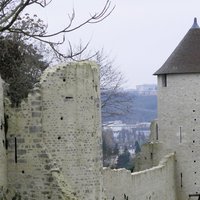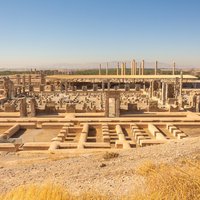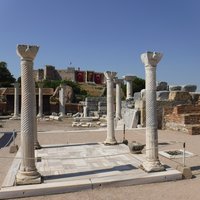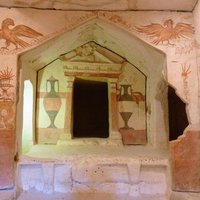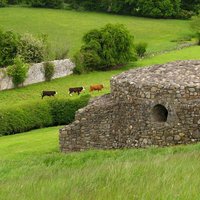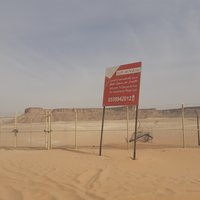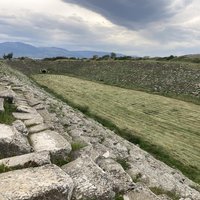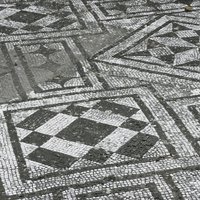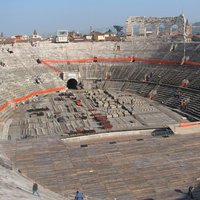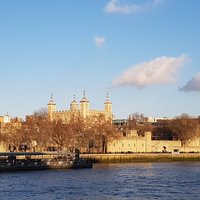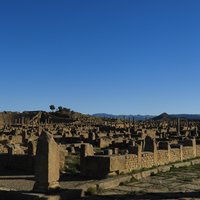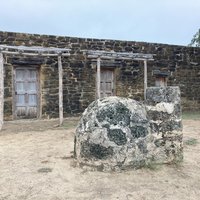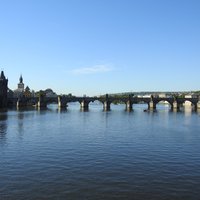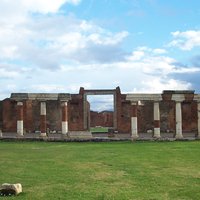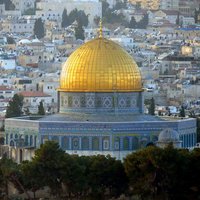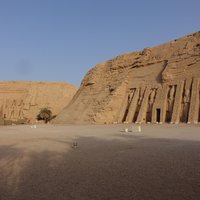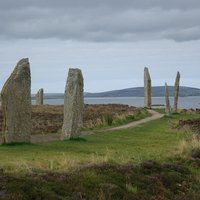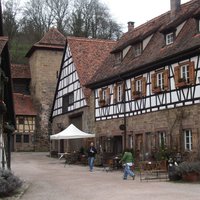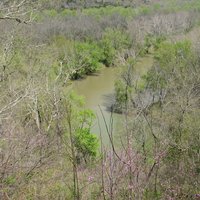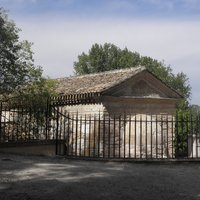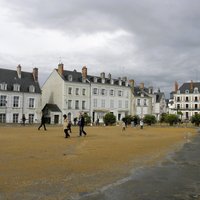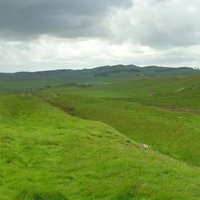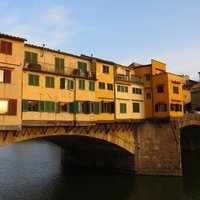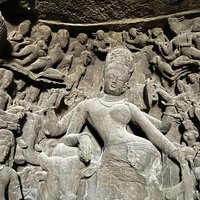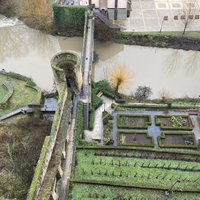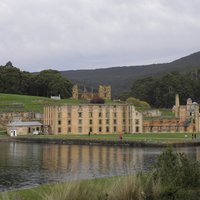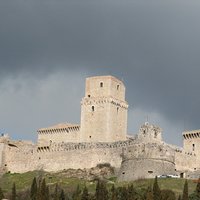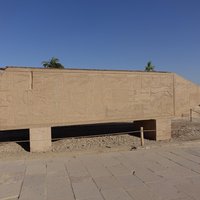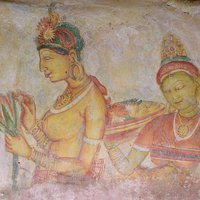Connected Sites
-
Suso: "the walls of the atrium are covered with graffiti written by pilgrims and monks in the 11th and 12th Centuries".
See irishpilgrimonthecaminodesantiago.blogspot.com
-
-
19th century graffiti (f.e. some Jean in 1830) is scratched into the main aquaduct at the level of the footbridge
-
Incised and painted inscriptions in Hebrew, Aramaic, Palmyrene, and Greek: "Geographical references in inscriptions on the walls of the catacombs reveal that the necropolis was used by people from the town of Beit She'arim, from elsewhere in Galilee, and even from cities as far away as Palmyra and Tyre." (wiki)
-
Temple of Bacchus at Baalbek, tourists and local visitors — left in both Arabic and Latin script
See hyperallergic.com
-
Graffiti from the Middle Ages on a door in Wartburg Castle. Also graffiti (a signature in Cyrillic) left by Peter the Great in the room where Luther translated the bible.
See www.nytimes.com
-
-
-
Piraeus Lion, one of four lion statues on display at the Venetian Arsenal, with two lengthy runic inscriptions into its shoulders and flanks: "at some point in the 11th century travelling Vikings had carved the runes as a form of graffiti"
See www.historytoday.com
-
-
Its walls are full of graffiti, most fairly recent but also from the 19th century such as "Laporie 1896" and "P. Leschi 1885".
See www.flickr.com
-
Great Enclosure at Musawwarat es-Sufra: visitors have left their mark, including the French adventurer Frederic Cailliaud in 1821 (Sudan Bradt Guide). As well from the Meroitc period and the younger post-Meroitic, Christian and Islamic periods
See musawwaratgraffiti.mpiwg-berlin.mpg.de
-
William Arnold Bromfield, Letters from Egypt, London 1856, p. 122 (Gebel Berkel): "We found very few memorials of European travellers upon these pyramids, so we held ourselves excused in gratifying the national predilection for this way of acquiring immortality, by carving our names enclosed in an oval or cartouche, and each name again separately on different pyramids. Mine. I cut at full length, and in large roman letters, with month and year, inside one of the porches, the roof of which was badly painted with lotus wreaths, just over the name of PRINCE PUCKLER MUSKAU, who has left no memorial of the date of his visit."
See www.egypt-sudan-graffiti.be
-
In the Moët & Chandon cellars, one can see many graffiti (characters, drawings, names, dates, quotes, etc.) left by wine cellar workers. (Nomination file, p. 151) Other cellars also have graffiti, e.g. Veuve Clicquot, Maison Taittinger, Maison Charles Heidsieck (Nomination file, Tome III, p. 58, 61, 64)
-
-
At Pallazo Té, in the Sala dei Giganti, graffiti from visitors (and imperial troops who used the palace as barracks) as early as the 17th century can be seen
-
-
-
-
The Supplementary Information file shows "[t]exts and poems written throughout history on the walls of the caravanserais of Aminabad and Bagh-e Sheikh about the events and happenings during the journey of the travelers who stayed in these caravanserais." (Supplementary information, p. 14)
-
-
At the Font de Gaume cave, some prehistoric paintings are covered with carvings from early visitors
-
-
Graffiti in Arabic, including the phrase “This is an inscription that I wrote with my own hand. My hand will wear out but the inscription will remain.”
See iqsaweb.wordpress.com
-
French 19th Century graffiti in Hang Dau Go
-
Coronation Chair in Westminster Abbey: "Most of the graffiti on the back part of the Chair is the result of Westminster schoolboys and visitors carving their names in the 18th and 19th centuries. One of the tourists carved "P. Abbott slept in this chair 5-6 July 1800" on the seat."
See www.westminster-abbey.org
-
-
Over the years, many travelers left their mark on the ruins in the form of graffiti, including ... Henry Morton Stanley. The foreign graffiti are concentrated in two particular spots, namely Xerxes’ Gate of All Nations and the Palace of Darius.
See www.iranicaonline.org
-
-
-
"There is evidence to show that Newgrange was plundered by Danish raiders about the year 860. Graffiti in the tomb dates back to the 7th century, a subject of great interest to historians." At Knowth as well. Also: Newgrange was re-discovered in 1699, visitors scratched their names.
-
"(...) the ninety-eight recorded rock inscriptions carry Ancient South Arabian inscriptions, Thamudic graffiti, and Arabic inscriptions." (AB Ev)
-
"graffiti were primarily made by artists and workers who visited the theater, the stadium, and the markets with their implements"
See www.ias.edu
-
By 18th century visitors, such as "the legendary architect/etcher Piranesi scribbled Piranesi 1741 into a grotto at Hadrian's Villa with a red crayon"
-
-
-
A Latin inscription, with a typographical error, chiseled into the stone steps surrounding the Forum square reads: “To hunt, bathe, play [games or gambling?], to laugh. That is life!".
-
-
In the Alamo (from the 19th century)
-
The hospital of Pons is known for its Romanesque porch that spans the road. On each side, the walls are decorated with low arcades, in front of which are placed stone benches that allowed pilgrims to rest in shelter. This remark explains the presence on the facing of very numerous graffiti: horseshoes, crosses, coats of arms. Graffiti can also be found in other places, such as the dormitory for the pilgrims or the sick. (Nomination file)
See commons.wikimedia.org
-
Great Pyramid: by the labourers who constructed the Pyramids, by visiting Romans
See anthropology.msu.edu
-
Ball Game Hall, Old Town Town Hall
-
Over 11,000 graffiti samples have been uncovered in the excavations of Pompeii, which "often offer rich insight into the lives of the city’s residents".
See en.wikipedia.org
-
Crusader graffiti in the Church of the Holy Sepulchre
-
"Graffiti inscribed on the southern pair by Greek mercenaries serving Egypt in the 6th century BCE have provided important evidence of the early history of the Greek alphabet". Also Victorian graffiti.
-
Maes Howe: "The 30 inscriptions found in Maeshowe, make it one of the largest, and most famous, collections of runes known in Europe"
See www.orkneyjar.com
-
Graffiti carved into the stone from seminary students over the past centuries
See www.norbertwoehnl.com
-
-
Monte Sant'Angelo: In the "crypts A, B and C, a vast number of objects, fragments and frescoes were discovered, but most important were the wall writings and graffiti, dating back to the time when these places were in use." "Evidence for the presence of pilgrims visiting the sanctuary between the end of the sixth and the mid-ninth century is provided through roughly two hundred inscriptions, carvings and scratched sketches executed on the surfaces inside the cave." (Nomination file, p. 217, 220)
-
At Chambord: names and dates, boats. Includes inscriptions made by the poet Jean de La Fontaine (1621-1695) and the writer Victor Hugo (1802-1885).
See www.flickr.com
-
Runic inscriptions in Hagia Sophia, made by members of the Varangian Guard in Constantinople in the Viking Age.
See en.wikipedia.org
-
-
Michelangelo’s Graffiti: face of a man, claimed to be created by the sculptor Michelangelo,
See www.atlasobscura.com
-
-
Royal Mound 11: Visitors have left several graffiti inside the burial chamber, some dating back to more than 100 years. These graffiti became a layer of the mound´s history." (Nomination file, p. 117)
-
-
Great North Road - Graffiti from 1830s. "35 pieces, including many initials, arrow, ship, the word MAD DOG followed by 'spell it backwards'"
See books.google.nl
-
"From the crypt of the original cathedral of Santa Maria Maggiore you descend to an underground environment that corresponds to a Roman house dating back to the first century. AD. (...) On the walls are engraved numerous graffiti with poetic verses, one of which names a Musae domus; hence the attribution to the muse of poetry and the house belonging to the poet Properzio. But the lack of archaeological and historical evidence is inadequate with the certainty to endorse this hypothesis."
See www.visit-assisi.it
-
The tomb of Ramesses VI in the Egyptian Valley of the Kings contains inscriptions from visitors up to 2,000 years ago, including a text saying "I can not read the hieroglyphs!"
See scienceinpoland.pap.pl
-
Ancient tourists visiting the 5th-century citadel at Sigiriya in Sri Lanka scribbled over 1800 individual graffiti there between the 6th and 18th centuries. Etched on the surface of the Mirror Wall, they contain pieces of prose, poetry, and commentary. (wiki)
See en.wikipedia.org

